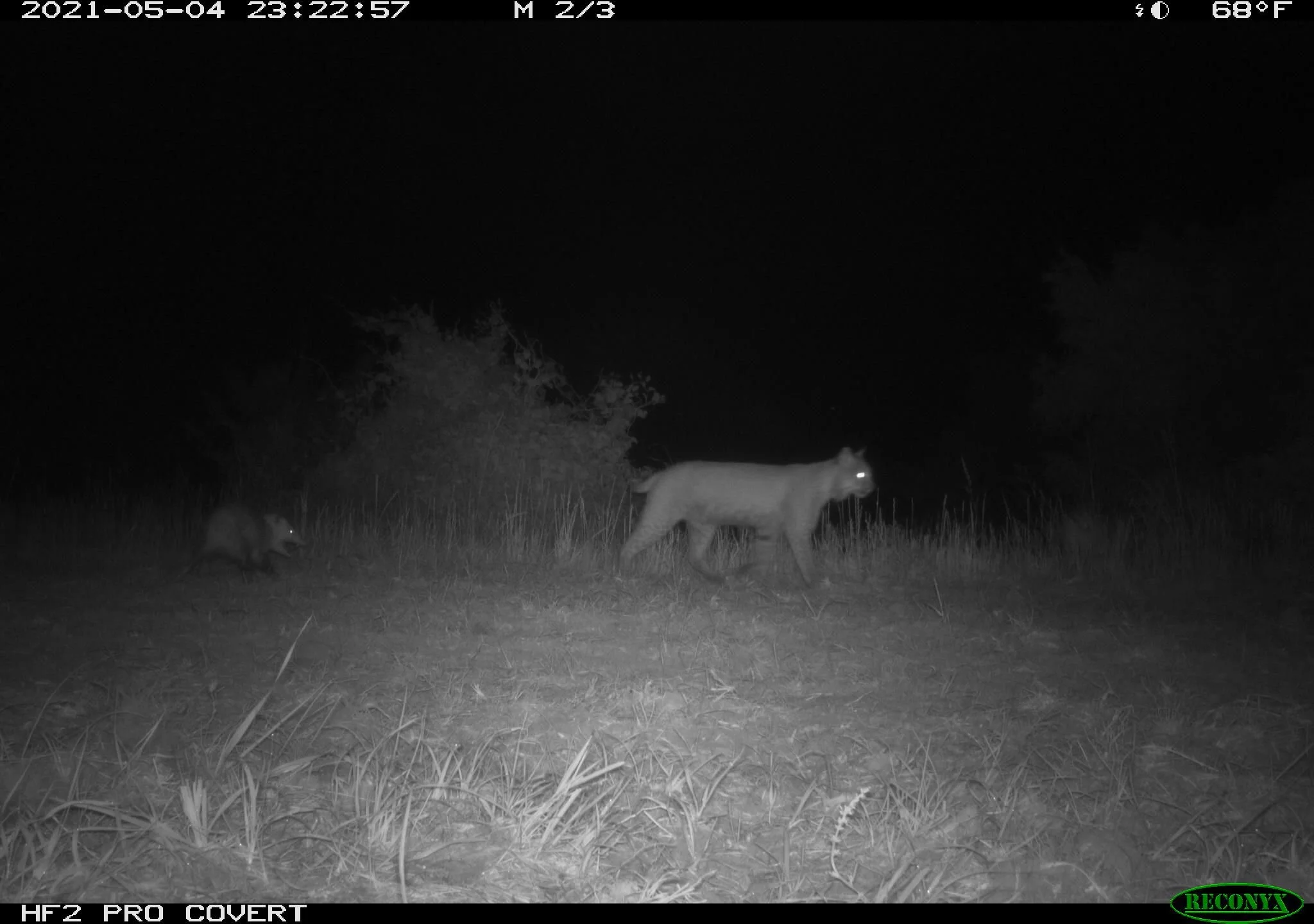Our Resilient Wildcat, Lynx rufus, Bobcat
People have too oft neglected or persecuted cats. When early human colonizers arrived in North America millennia ago, this great land was graced with many cat species, including American Lion, American Cheetah (why Pronghorn “antelope” in American West can run 60 mph), Saber-tooth Cats (perhaps several species), Jaguar, Cougar, Jaguarundi, Ocelot, Margay Cat, Lynx, and Bobcat. Grab your favorite paleo-biology text, and look up these long-time North American denizens. You will be inspired by their beauty and chagrined that our forebears killed off most of them (in numbers, if not species).
American Lion and Cheetah and Sabre-tooth Cats fell victim to human overkill, at least indirectly, as early human colonizers used new weapons to rapidly kill mega-herbivores, like Woolly Mammoth and Mastodon, for food and fiber, leaving native predators much less food. Two big cats in North America, Puma (Cougar) and Jaguar, survived in the West, and most of the small cats survived in diminished ranges and numbers. The North American wild cat who has proven most tolerant of human interlopers is the Bobcat, whose range still includes most of North America south of the Arctic. Bobcats can thrive in habitats as varied as Georgia’s Okefenokee Swamp (where I saw my first Bobcat, decades ago), northern Minnesota’s sub-boreal forests, and central California’s chaparral and grasslands (where I used to see them commonly in Golden Gate National Recreation Area, where wildlife is fully protected thus not so fearful of people).
Bobcats in our area like rocky hills for dens and sunning places, woods and meadows for hunting rodents and rabbits, swamps for hunting Muskrats, and frozen ponds, for patrolling edges where small rodents may appear. They can live fairly near people but generally, avoid getting too close to people. Perhaps because they’ve evolved a fear of tool-wielding bipedal mammals, they are most active at night and dawn and dusk (though I’ve been lucky to see them in broad daylight several times on lands protected by Northeast Wilderness Trust, Eddy Foundation, Champlain Area Trails, and Adirondack Land Trust here in Split Rock Wildway).
Imagine your housecat at her finest, add fifteen pounds of muscle and brain, make her even more symmetrical and athletic, shorten her tail, enhance her beauty, and you have the basic image of a Bobcat. Do you wish to shoot her, or entrap her in steel jaws? You do not, thank goodness, but your tax-payer-funded wildlife officials don’t mind if you do.
Despite strong public sentiment in favor of protecting Bobcats, the New York Department of Environmental Conservation a few years ago expanded the killing season on Bobcats, apparently under pressure from a small number of sport-hunters and trappers who wanted to take more of wildcat pelts. Most other states in the Northeast also have killing seasons on Bobcats, notwithstanding the growing body of science showing the ecological importance of predators and how vulnerable they are to social or population disruption if heavily shot or trapped.
New Hampshire has lately been protecting its Bobcats, and the Granite State is the richer for it. Current efforts by sports to open a killing season on Bobcats there, as well as ongoing killing seasons on Bobcats in New York and other states, are unfortunate, for ecological, aesthetic, ethical, and recreational reasons.
Bobcats play important ecological roles in forest ecosystems. They are effective predators of rodents and rabbits, helping hold in check numbers of these and other herbivores. Bobcats occasionally take deer, usually weak ones, at a time when over-browsing by deer (who have lost their main natural predators, Cougars and Wolves) threatens to degrade our Eastern Deciduous Forest.
In general, persecution of carnivores is wrong, again for ecological and ethical reasons. Carnivores generally reproduce slowly, have few natural predators, and are intelligent animals with complex social organizations. Most parts of our country suffer from too many herbivores and too few predators. We should be protecting, not persecuting, our remaining predators, and studying how to restore those we’ve eradicated.
The once-eradicated predators of the Northeast include the Bobcat’s more boreal cousin, the Canada Lynx (Lynx canadensis), and its imperiled status is another reason why allowing the killing of Bobcats, by guns or traps, is wrong. Bobcats and Lynx look much alike; and sport hunters or trappers can easily kill Lynx thinking they are killing Bobcat. Lynx have survived in northern Maine and have been seen in recent years in northern New Hampshire and Vermont. Combined with climate warming, a killing season on Bobcats could doom long-term viability of Lynx (which primarily prey on Snowshoe Hares and need cold snowy winters to thrive) in our region, and make extremely unlikely their recolonization of the Adirondacks.
Moreover, Bobcats are just plain beautiful! Like all conservationists, I hope people will value wildlife for its natural beauty and intrinsic value. Even if some must look at wildlife and wild places through a utilitarian lens, though, protecting Bobcats makes sense. They are worth more for wildlife watching and tracking opportunities than they are as pelts or meat. Rare and lucky is the person who more than occasionally catches a fleeting glimpse of this gorgeous cat – but what a lifetime’s thrill that is; and how much easier to humbly backtrack a Bobcat on a frozen swamp, reading the hunter’s story in prints, how she investigates Muskrat lodges, down logs, snags, and anywhere else she may find a vole or mouse or rabbit to catch for her hungry kittens.



